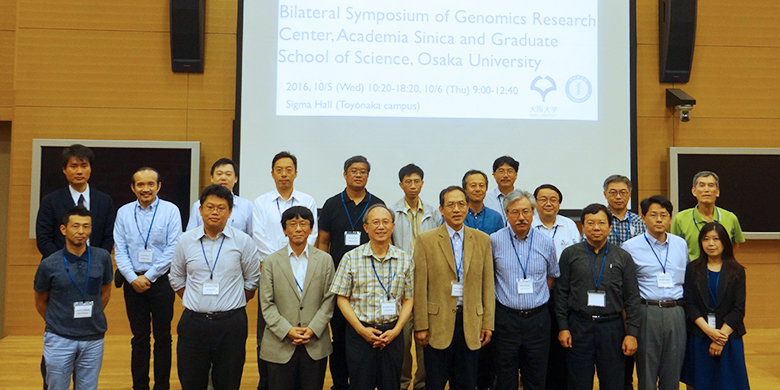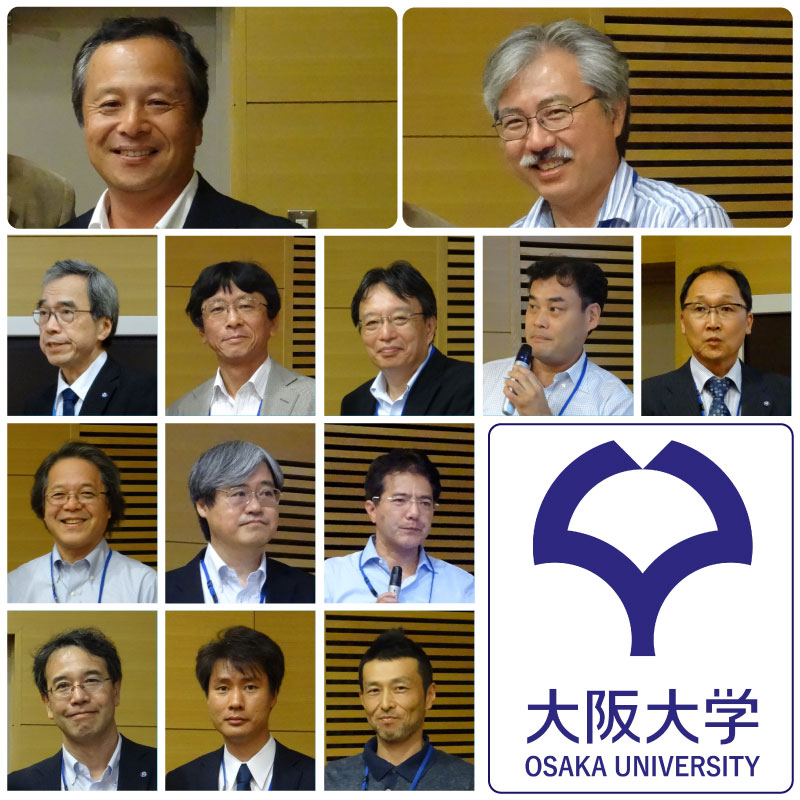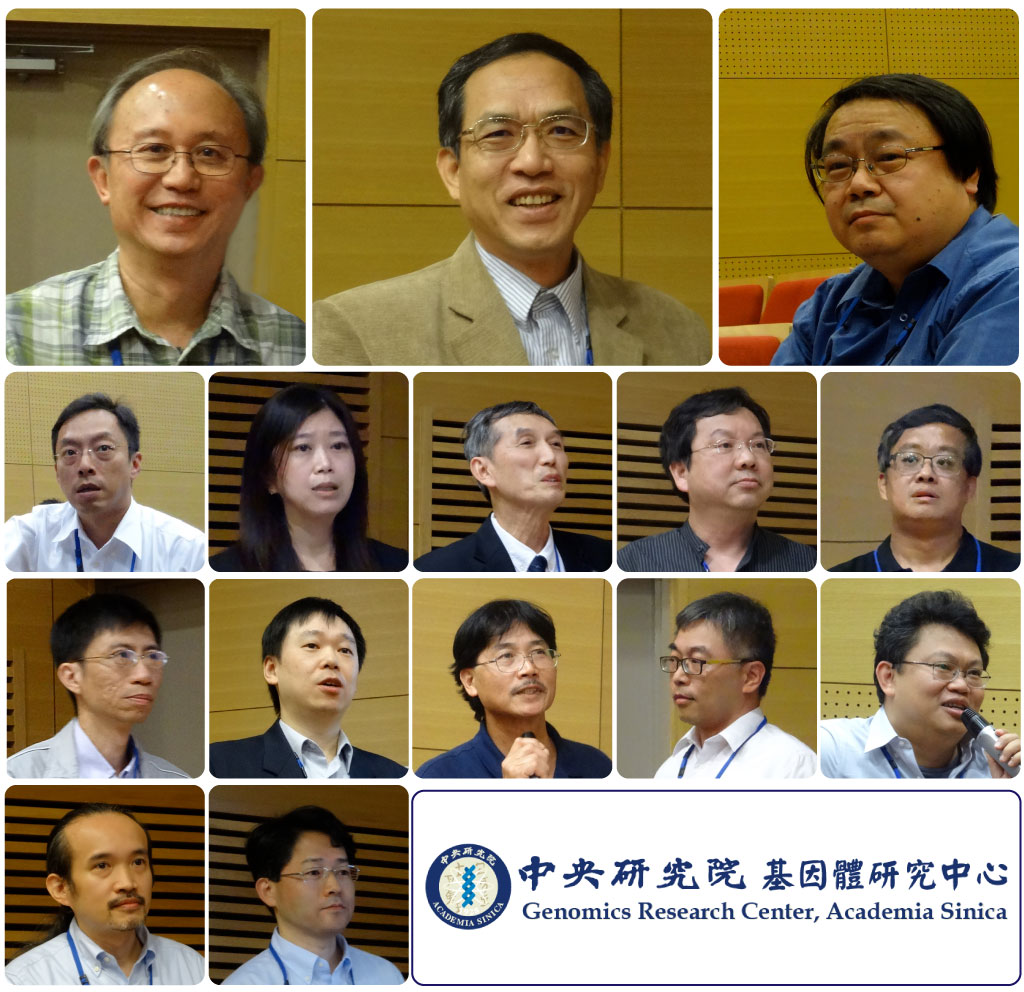The collaborative spirit is one of the key strengths in Genomics Research Center. When chemists, biologists, and engineers are mixed and matched, the synergy thereby created and re-created helps to pave the way toward solving critical human diseases.
Although one-to-one and one-to-multi-lab collaborations have been ongoing since the formation of GRC, researchers at GRC do feel an increasing need to go beyond a specific subject area for forming research alliance with internationally reputable institutions. After all, science is a global matter by nature.
 Group photo
Group photo
In responding to this call, a group of fourteen GRC researchers led by Director Shang-Cheng Hung has paid a two-day visit to the Graduate School of Science in Osaka University at the beginning of October this year. This is the first ever Osaka University-Genomics Research Center Bilateral Symposium, which was attended by the GRC delegation and by scientists from a variety of disciplines at Osaka University, one of the preeminent universities in Japan.
Professors Koichi Fukase of Department of Chemistry and Yasuhiro Kajihara of Department of Biological Sciences spearheaded the Bilateral Symposium on the Japanese side. According to Dr. Tien-Hsien Chang, the principal organizer of the GRC Delegation for this trip, “...there are quite a bit of overlapping research interests among scientists on both sides, particularly in glycobiology, glycochemistry, and immunology.”
 |
| From left to right, top to bottom: Yasuhiro Kajihara: Chemical synthesis of homogeneous glycoproteins, Koichi Fukase : Synthesis of biologically active immune-modulating glycoconjugates , Hiroshi Tsunemi : Dean of Graduate School of Science, Osaka University, Taroh Kinoshita: Biosynthesis and deficiency of glycosylphosphatidylinositol, Michio Murata: Water-mediated promiscuous recognition of lipidic ligands by fatty acid, Michisato Toyoda: Development of high-resolution multi-turn time-of-flight mass spectrometers, Kazuhiko Nakatani: Small molecules regulating DNA and RNA structure and functions, Sadahito Aoshima: Stimuli-responsive polymers, Atsushi Shinohara: Radio-isotope production for new medical use in targeted alpha therapy, Kazuya Kikuchi: Protein labeling using functional probes for imaging protein localization, Takashi Nakano: Application of accelerator for medical science, Yoshinori Takashima: Photo stimuli responsive supramolecular and topological materials using host-guest complexes, Koichi Fujimoto: Mathematical analysis of cell cooperation and competition |
In the Symposium, researchers from both sides took turns to present their research accomplishments in the hope to find common grounds for reaching a formal long-term exchange program. As it turns out, there is indeed a mutually palpable interest in building a closer tie on research collaboration, applying for joint research grants, as well as promoting exchange of graduate students.
A preliminary bilateral agreement has been drafted and is currently being considered for approvals by Osaka University and Academia Sinica.
A great step forward for a more global GRC research enterprise, indeed!
 |
| From left to right, top to bottom: Tien-Hsien Chang, Shang-Cheng Hung, Chia-Ning Shen, Che Alex Ma, Kuo-I Lin, Chi-Ming Liang, Shie-Liang Hsieh, Chung-Yi Wu, Trees-Juen Chuang, Yi Sheng Wang, Kuo Ping Chiu, Tsung-Lin Li, Wei-Chieh Cheng, Su-Chang Lin, Takashi Angata. |